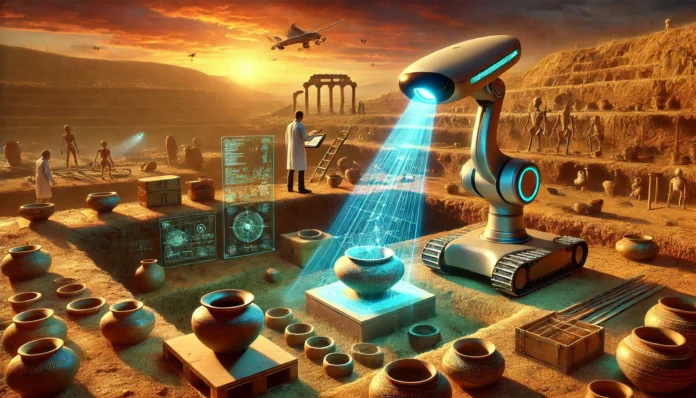Archaeology, the study of human history through artifacts, sites, and other physical remains, has long been a labor-intensive field requiring meticulous excavation, analysis, and interpretation. However, the integration of Artificial Intelligence (AI) is revolutionizing how archaeologists uncover, preserve, and understand the past. From deciphering ancient scripts to predicting the locations of undiscovered sites, AI is rapidly transforming this traditional discipline into a tech-enhanced frontier of discovery.
Discovering Hidden Sites with AI
Locating archaeological sites is one of the most challenging tasks in archaeology. Traditionally, researchers rely on historical records, satellite imagery, and on-ground surveys, which can be time-consuming and expensive. AI is changing this process in several ways:
1. Predictive Modeling
AI algorithms analyze geographical, historical, and environmental data to predict where undiscovered sites might exist.
- Example: The University of Southampton used machine learning to identify over 30 potential archaeological sites in the Middle East based on satellite imagery and terrain data.
2. Analyzing Satellite Images
AI-powered tools like Google’s Earth Engine process massive datasets from satellite imagery to detect subtle changes in soil composition, vegetation, or terrain that may indicate buried structures or artifacts.
Deciphering Ancient Scripts with AI
Translating ancient texts is a painstaking process that often requires years of expertise. AI is expediting this work by identifying patterns and filling in gaps in incomplete inscriptions.
- DeepMind’s Pythia: A neural network trained to restore missing parts of ancient Greek inscriptions, significantly reducing the time required for translations.
- Google’s AI-Powered Transcription Tool: Used to decipher and catalog the Dead Sea Scrolls, revealing insights into religious and historical contexts.
Preserving Artifacts and Cultural Heritage
AI is instrumental in preserving archaeological findings and protecting them from natural decay or human interference:
1. Digital Reconstruction
AI helps recreate damaged or incomplete artifacts and monuments, offering a glimpse of their original form.
- Example: The ancient city of Palmyra in Syria was digitally reconstructed using AI after being partially destroyed.
2. Preventing Looting and Damage
AI-powered monitoring systems analyze data from remote sensors and drones to detect illegal excavation activities or natural threats, helping safeguard valuable sites.
AI in Excavation and Analysis
AI enhances excavation and artifact analysis by automating tedious tasks and providing deeper insights:
- Excavation Robots: AI-driven robots assist in delicate excavation processes, minimizing the risk of damage to fragile artifacts.
- Artifact Identification: Tools like DALL-E and similar generative models analyze fragments and propose probable reconstructions or classifications.
Challenges and Ethical Concerns
While AI offers remarkable advancements, its use in archaeology also raises ethical and practical questions:
- Data Bias: AI models may inherit biases from the datasets used to train them, potentially overlooking underrepresented cultures or misinterpreting historical contexts.
- Access and Ownership: As AI reconstructs artifacts or deciphers texts, disputes may arise over who owns the intellectual property—the AI developers or the countries and communities tied to the heritage.
The Future of AI in Archaeology
AI is not replacing the expertise of archaeologists but augmenting their capabilities. By automating repetitive tasks, enhancing accuracy, and opening new possibilities for discovery, AI allows researchers to focus on interpreting the broader implications of their findings. As AI technology continues to advance, it holds the potential to uncover untold stories of human civilization, ensuring that the lessons of the past are preserved for future generations.





